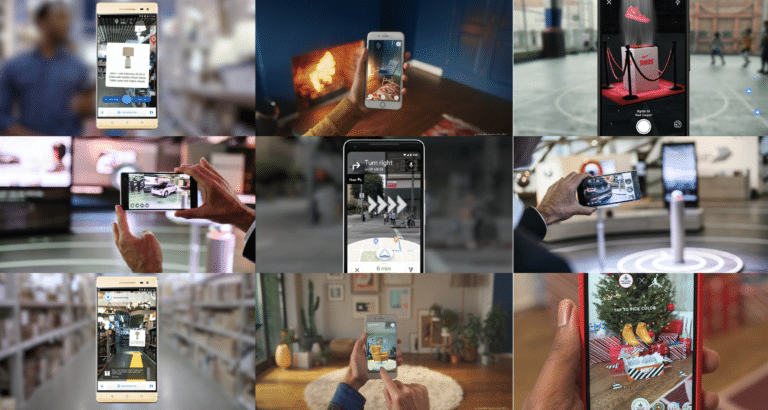
What’s the state of AR? Who’s making money? and what business models are developing? These are questions we’ve been answering in the wake of Magic Leap One‘s launch, and our latest Intelligence Briefing on AR Advertising. The latest is below in a loose transcript of an interview with ARtillry Chief Analyst Mike Boland. You can also see a deeper dive on these topics in ARtillry PRO.
 Where does all the interest in AR come from, and what’s driving the market today?
Where does all the interest in AR come from, and what’s driving the market today?
ARtillry Intelligence: At a high level, AR has captured the tech world’s imagination because it’s visual intensity makes it inherently sexy, and potentially the next era of computing. It could be as transformative of an interface and format as touch input was in the smartphone era. It changes everything from product design to business models.
But what’s really driving the market is major tech giants and platforms that are investing heavily in AR because they see it as a way to cement their position in this next era of computing. Amazon is keen on AR to boost e-commerce through product visualization. Apple wants to sell more devices through compelling AR apps. Facebook wants to keep us in its walled garden, sharing things through AR experiences and lenses. And Google wants to establish its position in the next visual iteration of search. The level of motivation and investment from these giants to plant these flags is buoying the space today.
The primary revenue models so far are inherited from mobile, including hardware (Apple, Magic Leap), in-app purchases, (Niantic, games), e-commerce (Amazon) and ads (Facebook, Google, Snapchat).
Who are the market leaders?
AI: It’s mostly the major tech giants and platforms because they can invest with a long term strategy. Smaller companies don’t have pockets deep enough or an investment horizon that’s as long. But those smaller companies are where most of the innovation is coming from, such as AR cloud startups like 6D.ai, mid-range players like Niantic, and “building blocks” like Meo. As the space matures we’ll see lots of M&A as those platform players accelerate their IP development and talent by buying rather than building.
Why is AR important? How is it different than today’s tech?
AI: It’s an inherently different interface. Looking back, computing has made a series of progressive steps towards more intuitive control and inputs. And that involves interfaces like mice, keyboards and touch screens. AR applies that concept of reducing the translation or “cognitive load” by infusing digital assets with the world we live in. That essentially takes the next step in the evolutionary path towards more intuitive melding of our digital technologies and our lives.
As for what makes it different or effective as a marketing vehicle, it has the potential to be a rare “full funnel” medium. As shown by lots of advertisers working with Snapchat Lenses and Facebook AR News feed ads, It can enhance upper-funnel awareness and product engagement, and it can work in lower funnel contexts in terms of contextualizing products at or near the point of purchase. Taking that a step further, visual search such as Google Lens will allow us to see local business information, or in store retail product visualizations — all with the high-intent advantages that makes search such a valuable ad medium today.

Where is the most potential for AR marketing? Who’s showing best practices?
AI: We’re big on the concept of AR to drive local/offline commerce. 93 percent of the $3.7 trillion in U.S. retail commerce happens offline, but mobile interaction like search increasingly drives that offline commerce, to the tune of about $1 trillion in retail spending. That’s where AR could take the biggest bite because it’s inherently aligned with a use case of qualifying stores and products when we’re out and about in high-intent purchase mode. And again, it does so in way that’s more intuitive than tapping search queries on a tiny keyboard.
Examples are retail information in-store, local mapping and search, Google recently announced AR based turn by turn directions in Google Maps. Product visualization is another example, such as BMW iVisualizer. Taking that a step further, consider auto showrooms that can have better inventory efficiency when they don’t have to keep a car in every color on premises and can instead dynamically reskin a base model through an AR interface.
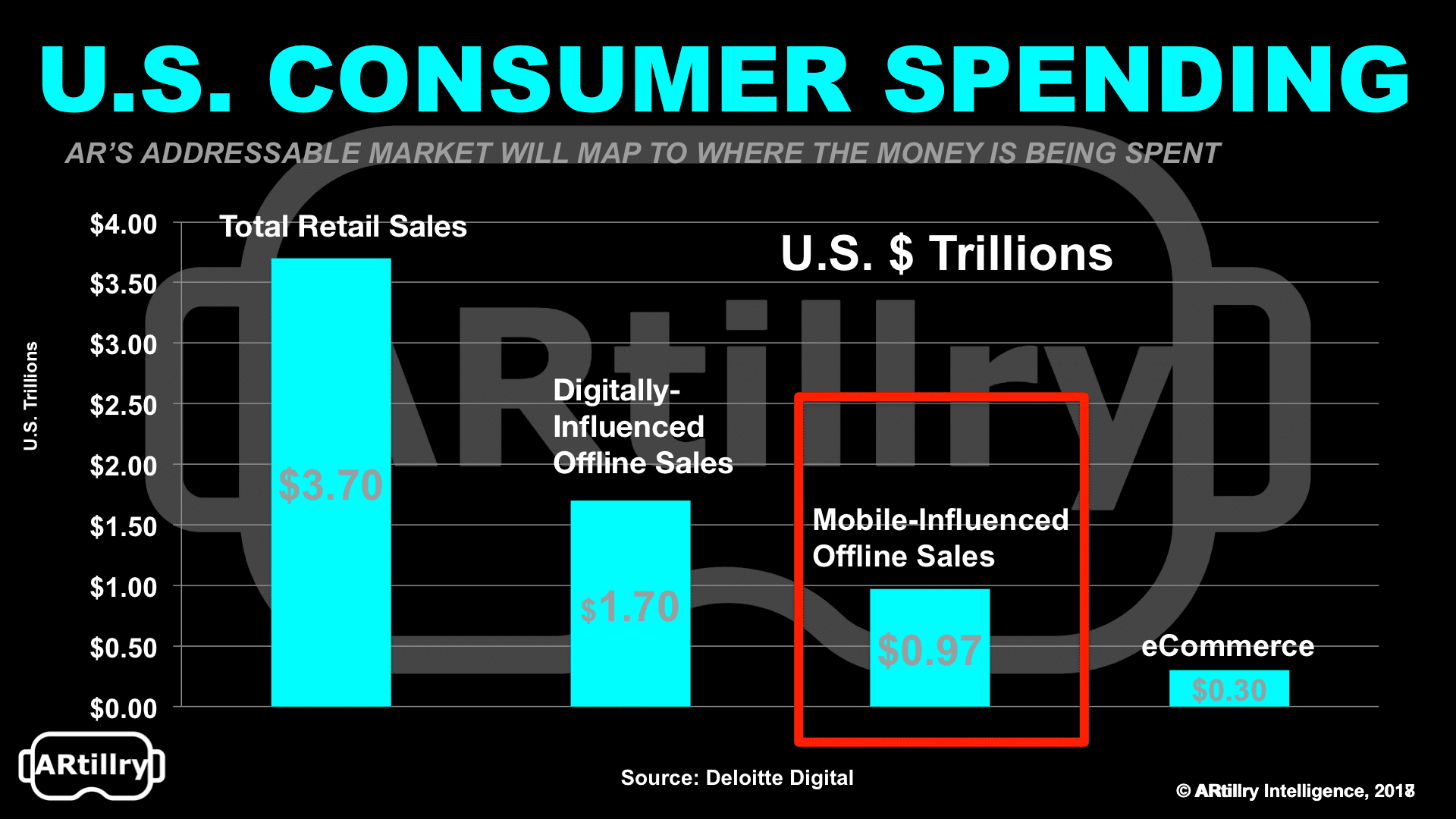
How big is the market for AR advertising? What’s the projected revenue growth?
AI: We’ve projected it to grow from $167 million today to $2.6 billion by 2022. That’s not branded AR apps which is more of a marketing spend, it’s actual campaign ad buys. So today that includes things like AR lenses on Snapchat and Facebook. Where we get those figures at a high level involves today’s ad spending on AR campaigns, and projecting forward based on the installed base of users.
There are about 762 million AR compatible smartphones today, about 158 million of those are active AR users. So those numbers present a strong opportunity, but you also have some downsides that diminish ad inventory such as the fact that AR sessions are rather short, due to arm strain of holding your phone up. We like to say VR is a meal, but AR is a snack. So all of those use case realities, inventory availability, advertiser adoption, ad rates and other inputs go into informing our ad revenue projections.

Why has AR adoption from advertisers been slow?
AI: One reason is the usage levels which are still low and inventory constrained as we just discussed. There’s not enough scale to get them excited. Two, even if they do get over that challenge, they’re not really seeing the ROI and not wrapping their brains around it yet. This is a common challenge with advertisers as some are still struggling to do mobile right. Three, which relates to point two is measurement, there isn’t really the metrics to really capture the high engagement of AR, and if measured with legacy analytics like clicks and impressions, it will really fail to accurately assign value to AR’s potential.
What ‘s Facebook’s AR play and how does it compare to Snapchat’s?
AI: It’s a logical direction for Facebook because their monetization correlates to how much time we spend in their walled garden sharing things. This becomes simply another engagement driver in terms of organic use of AR lenses. As for their specific ad units around AR lenses, those are also logical because they present additional options for advertisers to showcase products in fun and demonstrable ways, especially categories like fashion and lifestyle. Michael Kors has already done this with Facebook advertising in terms of a news feed ad that when clicked, activates the front facing camera for an AR experience to try on glasses. When done, you can go back to the news feed to purchase the glasses in one click. That full funnel experience is again an advantage AR will have.
As far as comparison to Snapchat, it could have an edge in more commercial intent. Facebook has created an environment that is more commerce-oriented compared with snapchat, as shown by it’s much higher ARPU metrics. So the introduction of AR ads and commerce-enabled ad units could perform better there. Not to mention that they have many more users so could scale AR ad campaigns better as simply a numbers game for campaign engagement.
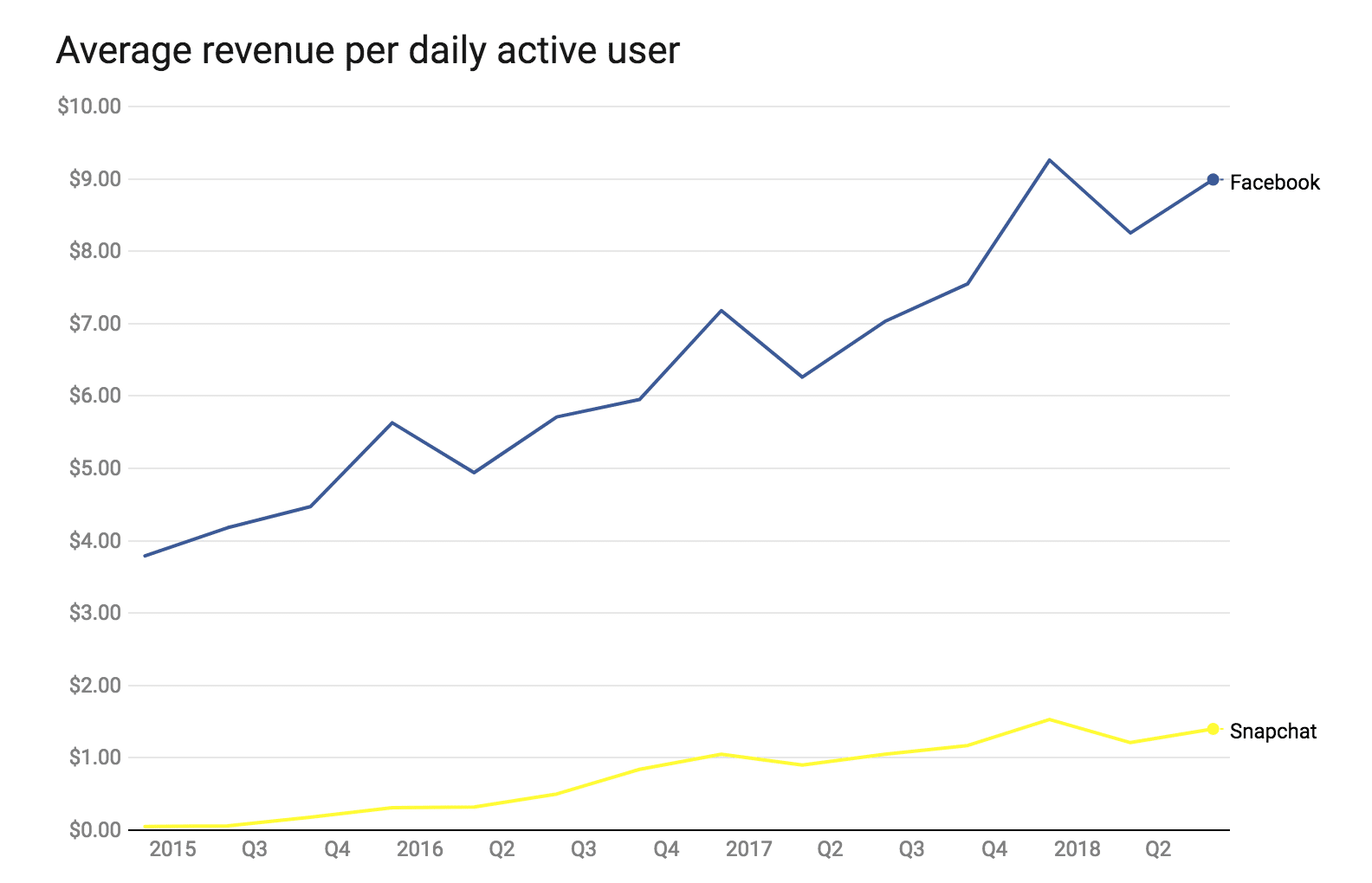
What are the challenges or pain points with AR advertising?
AI: The biggest challenge is advertisers wrapping their heads around it and understanding what is inherently a new form factor and set of use cases. Once they do, they’ll be able to design campaigns that are native to the medium. But until then — just like we saw in early days of smartphone advertising — there will be a lot of misfires and attempts to port existing campaigns or legacy media thinking. That “habit creep” and inability to think natively will be AR’s biggest product and design pitfall of the next few years.
How well is the industry able to measure AR advertising in terms of effectiveness and ROI?
AI: Measurement, will again be a challenge in terms of truly assigning value and ROI to campaigns. Just like in early days of smartphone ads when legacy metrics were slapped onto mobile campaigns — which still somehow happens to this day — we’re going to see a long period of learning curves for advertisers to not only design campaigns natively but measure them natively.
Though I cringe to think of it, we’re going to see lots of AR campaigns measured with things like click through rates. The eventual KPIs will have to better capture things like buyer intent or actual transactions. Given AR’s use case in retail and last-mile engagement, it should measure activities that happen closer to the transaction. And because of the use of the front facing camera for things like lenses, computer vision could enter the picture as a way to determine qualitative signals of brand affinity and engagement through biometric signals. Think: pupil dilation. Those figures won’t be as easy to benchmark and get the ad world to adopt, but it’s vital to AR’s accurate assignment of value and ROI.
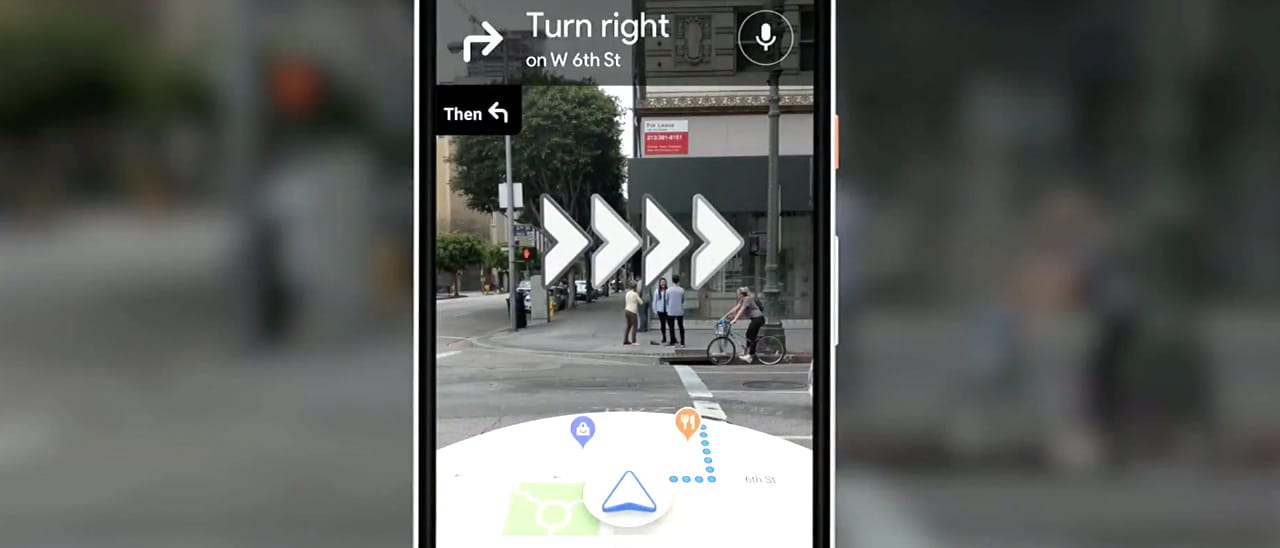
How does VR play into this discussion, and will it converge with AR eventually?
AI: A lot of people believe the two will converge. I’m not convinced. They are each so different in their fundamental experiences and goals. Trying to combine them doesn’t make a lot of sense and they’ll have separate paths for at least the next decade. It’s like saying that smartphones and PCs should converge. Sure they can, and that’s kind of what a tablet is. But sometimes you want something that fits in your pocket and other times you want to type a 1000-word essay. A hybrid approach compromises both ends of that spectrum, at least from a hardware perspective. So i think the same will apply to the VR/AR spectrum.
What advice do you have for advertisers that are starting to experiment with AR?
AI: As much as possible, try to think native. Try to not apply tactics and measurements from legacy media to AR. Think of the things that AR is good at — highly immersive product engagement and visualization — and work backwards from there. Campaign execution and success will have a better chance if AR is given the chance to do what it does best, rather than just enhance your existing campaigns. And a good reminder is that the physical world doesn’t occur in rectangles so a medium that literally infuses the digital and physical worlds shouldn’t include rectangular mobile banners, even though we’ll probably see people try to do that. So start fresh with AR and build campaigns and experiences from the ground up.
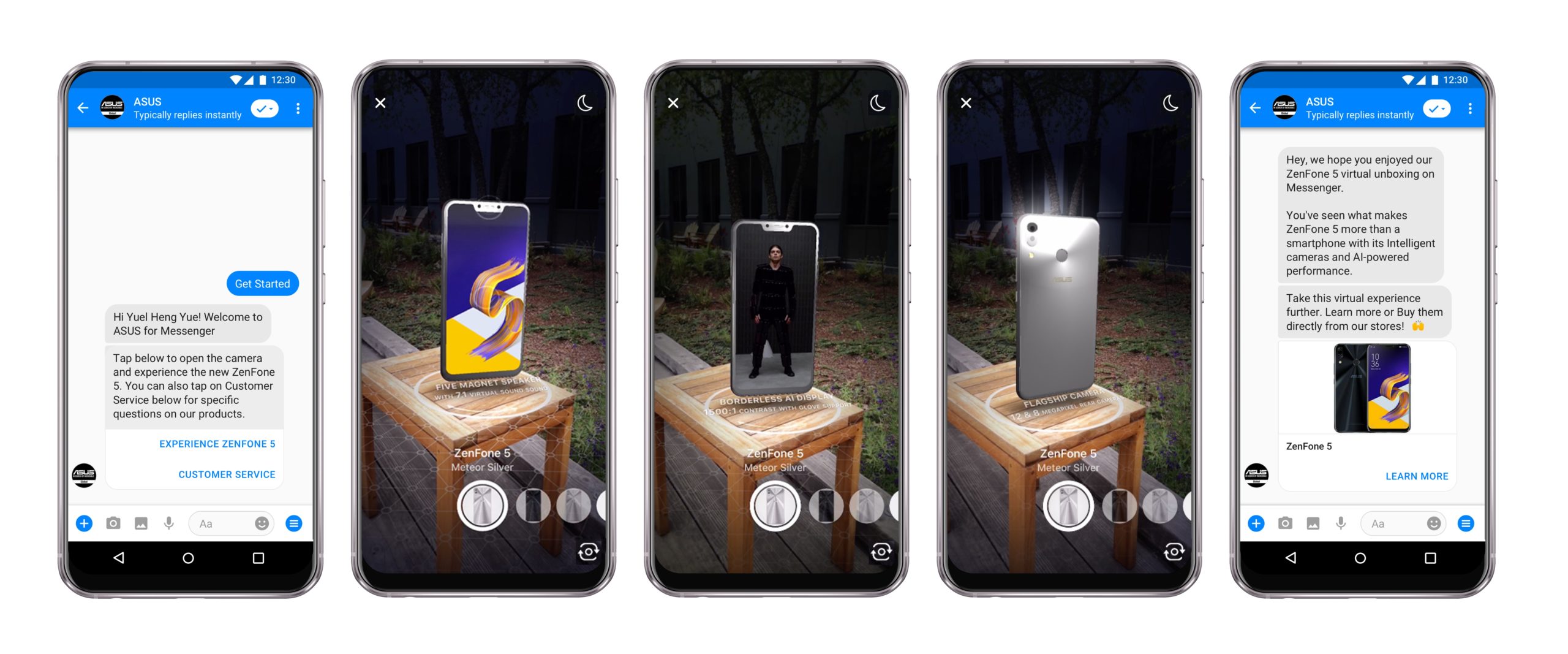
Where do you think AR will be in 5 years?
AI: Right now, we’re all about mobile because that’s the form factor that scales, thanks to mobile AR compatibility a la ARkit and ARcore. That form factor will be with us for a while but in a broader sense is a path to get to smart glasses. The latter won’t come until they’re sleek enough for all-day use and we move past stylistic and cost issues that today prevent any semblance of scale.
But when we get there in the next few cycles of Moore’s Law (3-5 years), the opportunity will be exciting because a wearable format means potentially all-day use. And that has implications for everything we discussed such as greater scale, ad inventory, gaze-based campaign measurement, personalization and other things that’ll transform advertising as we know it.
Meanwhile, mobile AR will be a training ground for developers and advertisers to refine strategies for delivering and measuring AR content and ads. So when we get to the smart glasses era, AR interaction and engagement will be well developed, and we’ll hit the ground running.
I have a theory that this is Apple’s endgame in viewing smart glasses as the device that will replace the iPhone eventually. For it to work, Apple first has to condition the world, including consumers and developers, about how to use, value and design for AR.
For deeper XR data and intelligence, join ARtillry PRO and subscribe to the free ARtillry Weekly newsletter.
Disclosure: ARtillry has no financial stake in the companies mentioned in this post, nor received payment for its production. Disclosure and ethics policy can be seen here.
